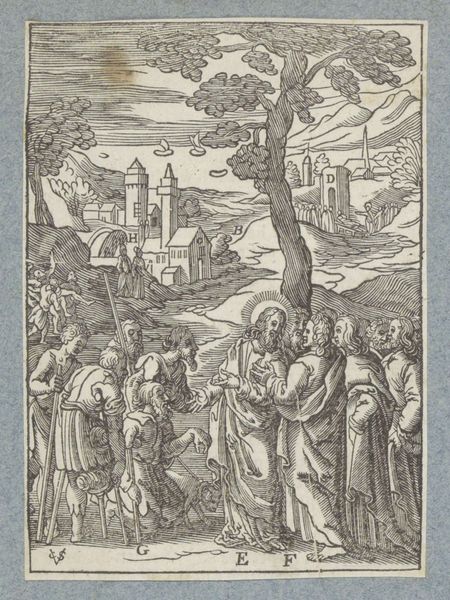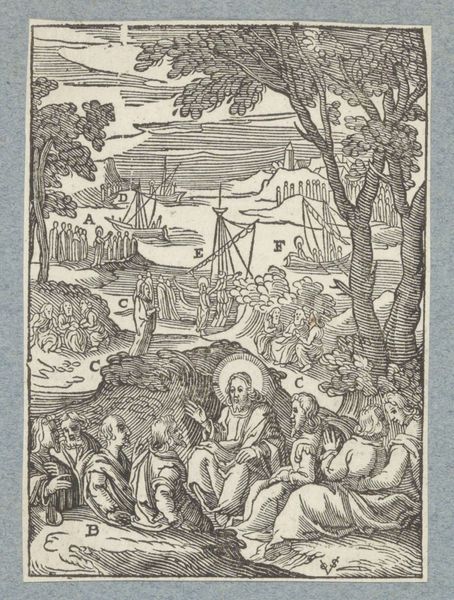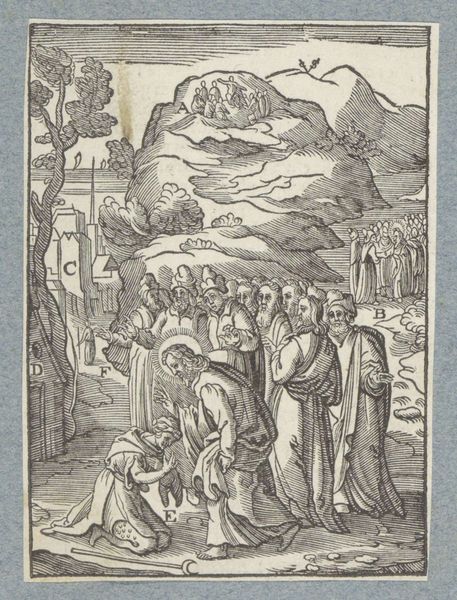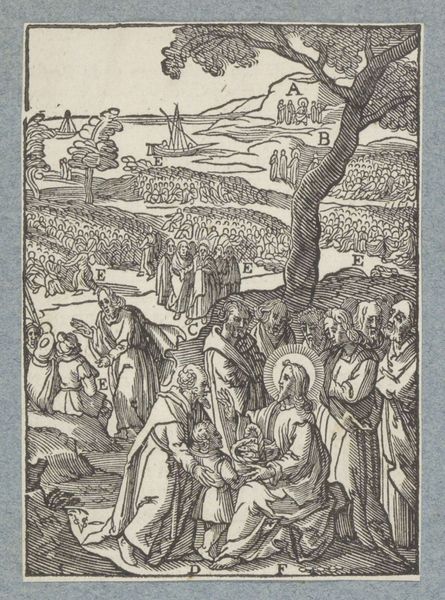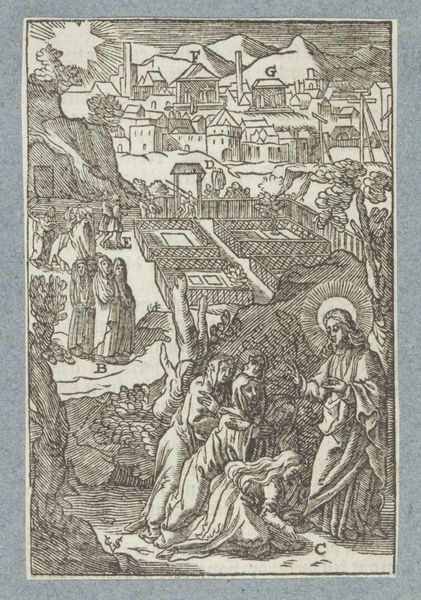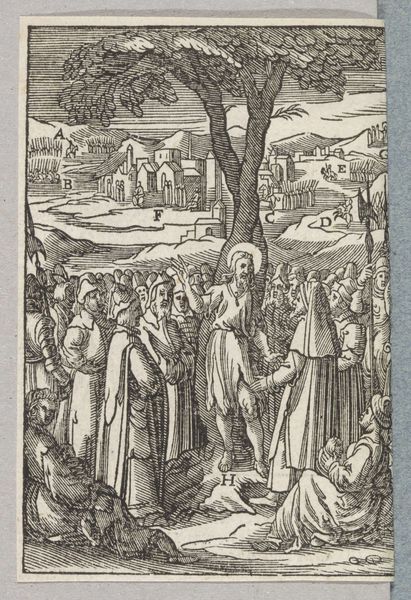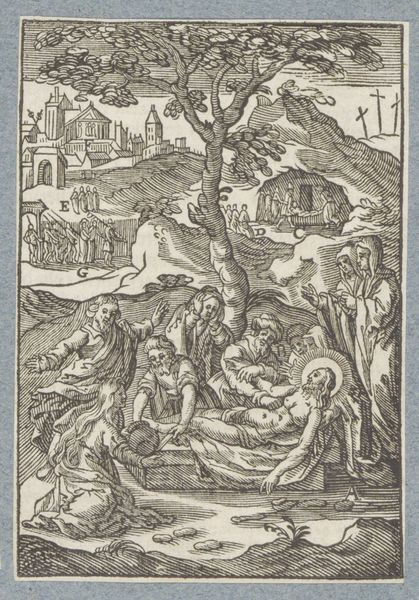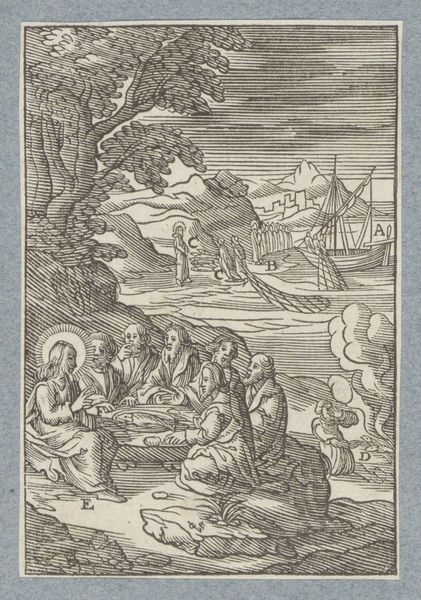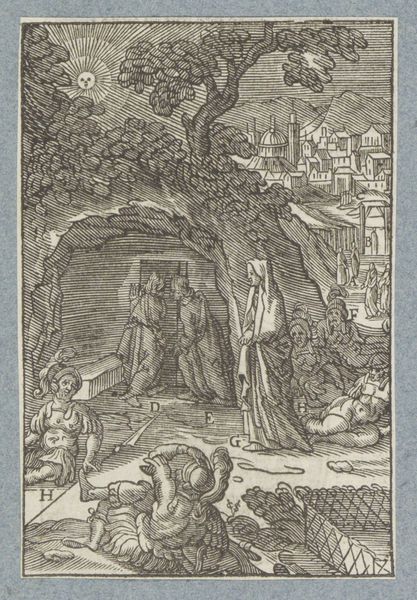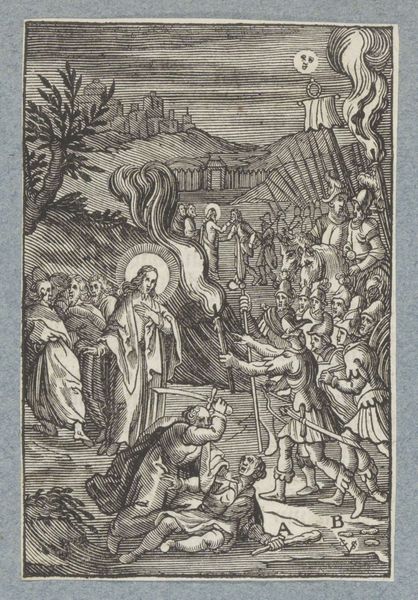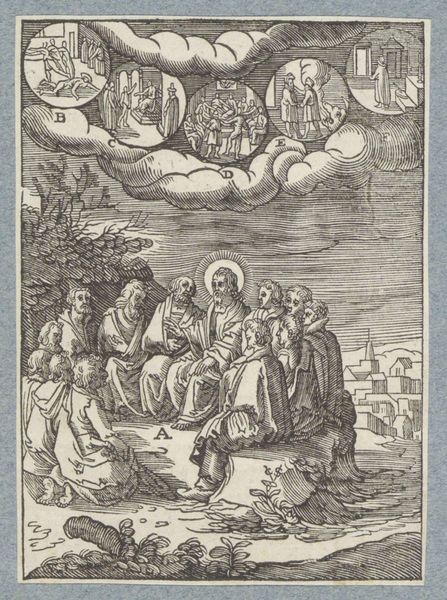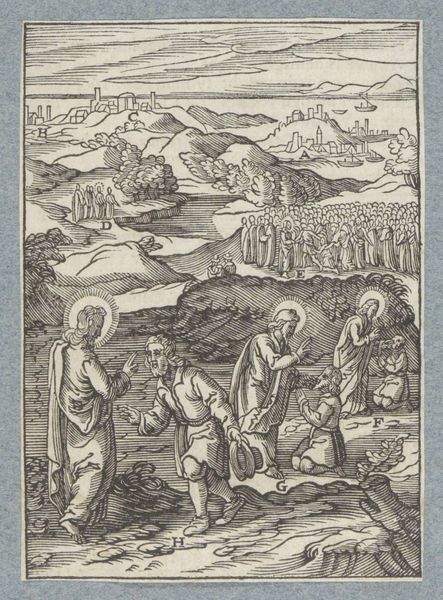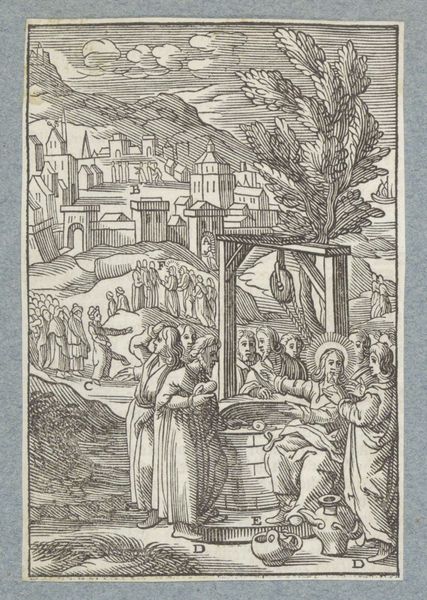
print, engraving
#
narrative-art
# print
#
history-painting
#
engraving
Dimensions: height 100 mm, width 72 mm
Copyright: Rijks Museum: Open Domain
Curator: Here we have Christoffel van Sichem the Younger’s 1629 engraving, "Tweede wonderbaarlijke spijziging," or "The Second Miraculous Feeding," currently housed in the Rijksmuseum. Editor: My first thought is how meticulously crowded the scene is. Every inch seems filled with figures, patterns, and lines. There's a nervous energy about it despite the supposedly miraculous subject. Curator: Indeed, it is a busy image. Considering its historical context, the piece can be understood through the lens of wealth redistribution and social responsibility. This artwork comes from a period marked by significant socio-economic disparities; thus, a visual narrative depicting miraculous feeding can be interpreted as a potent statement on access to resources and societal obligations towards the marginalized. The act of feeding itself embodies complex intersections of power, sustenance, and dependency. Editor: Absolutely. Van Sichem seems concerned with a broader, deeper cultural need as evidenced by a specific cluster of people standing in the distance seemingly engaging with each other, not at all fixated on this "miracle," as you say. Their detachment, as small as they seem, makes this scene less about piety and more about performance. The engraving process, those definitive and harsh lines—emphasizes a certain inflexibility about it all. I do see coded anxieties here, though I can't name it. Curator: It certainly offers a dialogue about cultural memory through very specific visual symbolism, in addition to offering different iconographic components to the feeding motif. For example, you've got your central figures obviously. Then behind them you have people being actively fed. Look a little further back and you can see others carrying vessels full of supplies, possibly alluding to themes of labor, access, and distribution of goods—all vital aspects related to economic justice. Then in the background you have this almost heavenly image. Editor: Ah, that small cluster—almost floating in the background. And below them, it almost looks like a gathering around a giant sail, or some sort of strange architectural rendering! Curator: Right. What the artist visually evokes here with figures, groupings, symbols... all come together to offer a broader reflection of cultural values prevalent at the time. Editor: This definitely gives me much to consider beyond just the biblical scene, and allows me to investigate more about the time period and what was important then! Curator: Absolutely. Thank you.
Comments
No comments
Be the first to comment and join the conversation on the ultimate creative platform.
